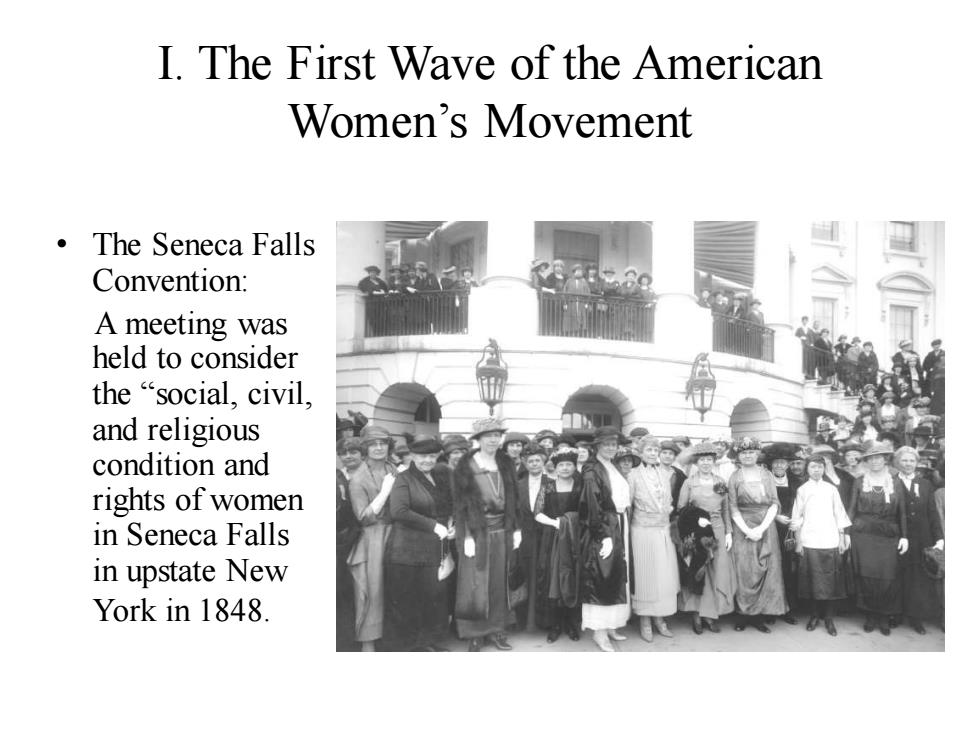
I.The First Wave of the American Women's Movement ·The Seneca Falls Convention: A meeting was held to consider the"social,civil, and religious condition and rights of women in Seneca Falls in upstate New York in 1848
I. The First Wave of the American Women’s Movement • The Seneca Falls Convention: A meeting was held to consider the “social, civil, and religious condition and rights of women in Seneca Falls in upstate New York in 1848
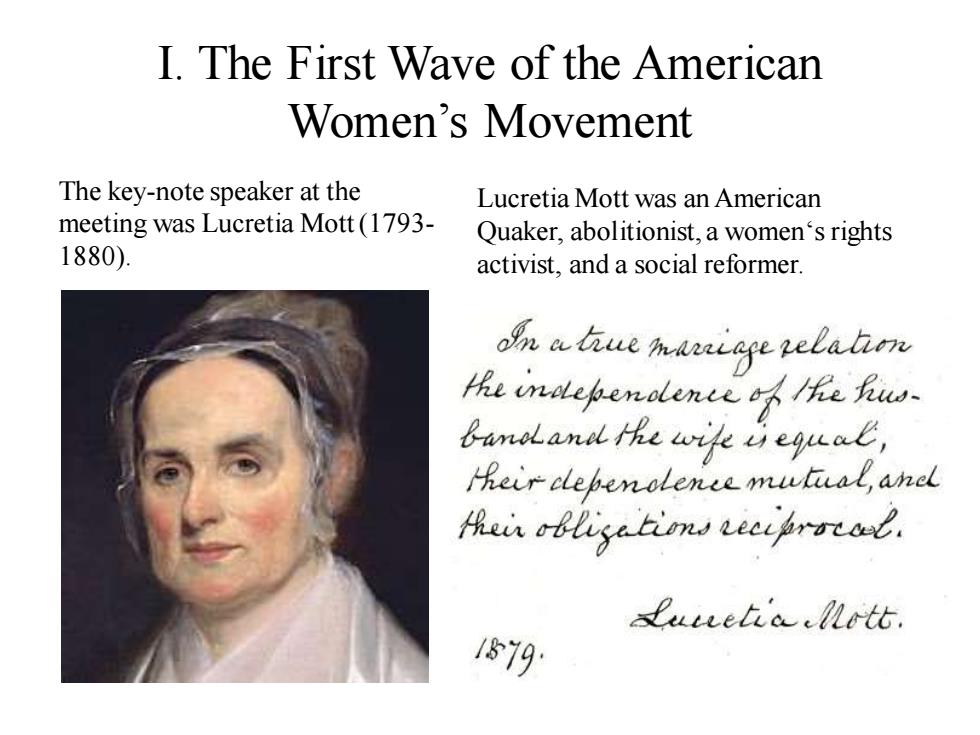
I.The First Wave of the American Women's Movement The key-note speaker at the Lucretia Mott was an American meeting was Lucretia Mott(1793- Quaker,abolitionist,a women's rights 1880). activist,and a social reformer a tiue mavigpe pelabie 悦endinii/侃w. Bandland the wipe ii equae fReir clepenolenee mutial anel 倪uo以setims rieiprron £iet'M6tt 1879
I. The First Wave of the American Women’s Movement The key-note speaker at the meeting was Lucretia Mott (1793- 1880). Lucretia Mott was an American Quaker, abolitionist, a women‘s rights activist, and a social reformer
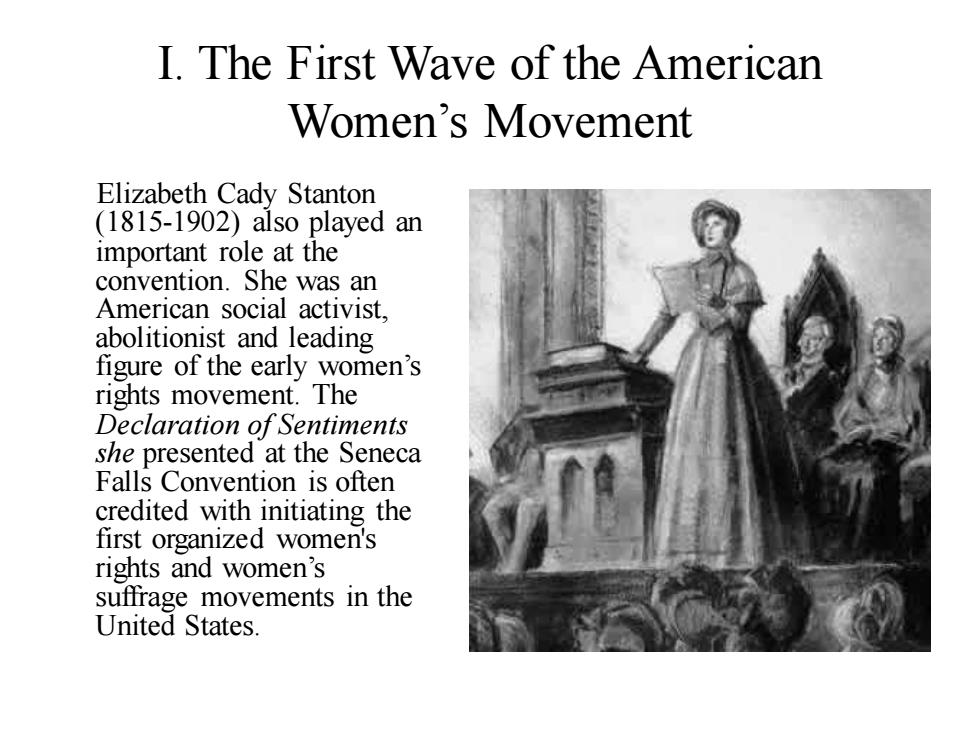
I.The First Wave of the American Women's Movement Elizabeth Cady Stanton (1815-1902)also played an important role at the convention.She was an American social activist. abolitionist and leading figure of the early women's rights movement.The Declaration of Sentiments she presented at the Seneca Falls Convention is often credited with initiating the first organized women's rights and women's suffrage movements in the United States
I. The First Wave of the American Women’s Movement Elizabeth Cady Stanton (1815-1902) also played an important role at the convention. She was an American social activist, abolitionist and leading figure of the early women’s rights movement. The Declaration of Sentiments she presented at the Seneca Falls Convention is often credited with initiating the first organized women's rights and women’s suffrage movements in the United States
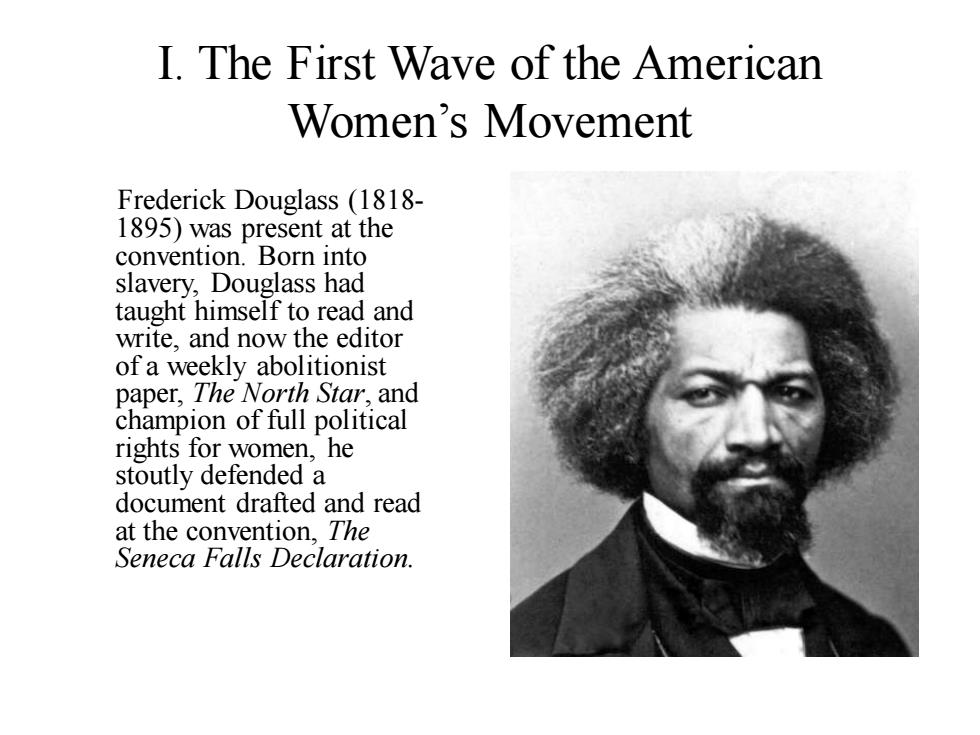
I.The First Wave of the American Women's Movement Frederick Douglass(1818- 1895)was present at the convention.Born into slavery,douglass had taught himself to read and write,and now the editor of a weekly abolitionist paper,The North Star,and champion of full political rights for women,he stoutly defended a document drafted and read at the convention,The Seneca Falls Declaration
I. The First Wave of the American Women’s Movement Frederick Douglass (1818- 1895) was present at the convention. Born into slavery, Douglass had taught himself to read and write, and now the editor of a weekly abolitionist paper, The North Star, and champion of full political rights for women, he stoutly defended a document drafted and read at the convention, The Seneca Falls Declaration
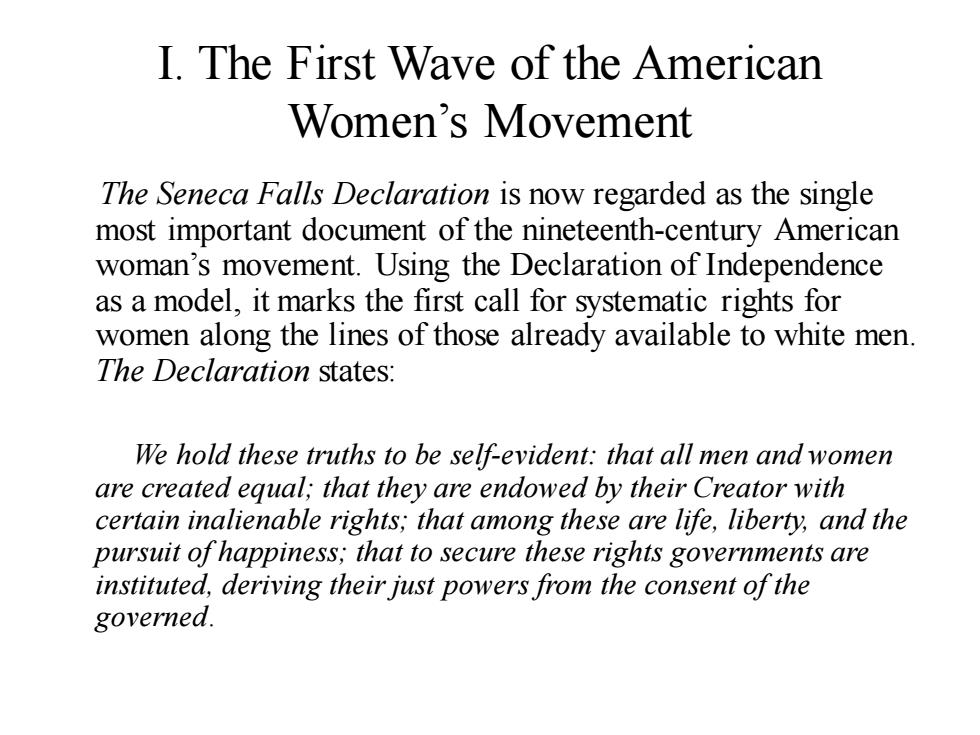
I.The First Wave of the American Women's Movement The Seneca Falls Declaration is now regarded as the single most important document of the nineteenth-century American woman's movement.Using the Declaration of Independence as a model,it marks the first call for systematic rights for women along the lines of those already available to white men. The Declaration states: We hold these truths to be self-evident:that all men and women are created equal;that they are endowed by their Creator with certain inalienable rights;that among these are life,liberty,and the pursuit of happiness;that to secure these rights governments are instituted,deriving their just powers from the consent of the governed
I. The First Wave of the American Women’s Movement The Seneca Falls Declaration is now regarded as the single most important document of the nineteenth-century American woman’s movement. Using the Declaration of Independence as a model, it marks the first call for systematic rights for women along the lines of those already available to white men. The Declaration states: We hold these truths to be self-evident: that all men and women are created equal; that they are endowed by their Creator with certain inalienable rights; that among these are life, liberty, and the pursuit of happiness; that to secure these rights governments are instituted, deriving their just powers from the consent of the governed